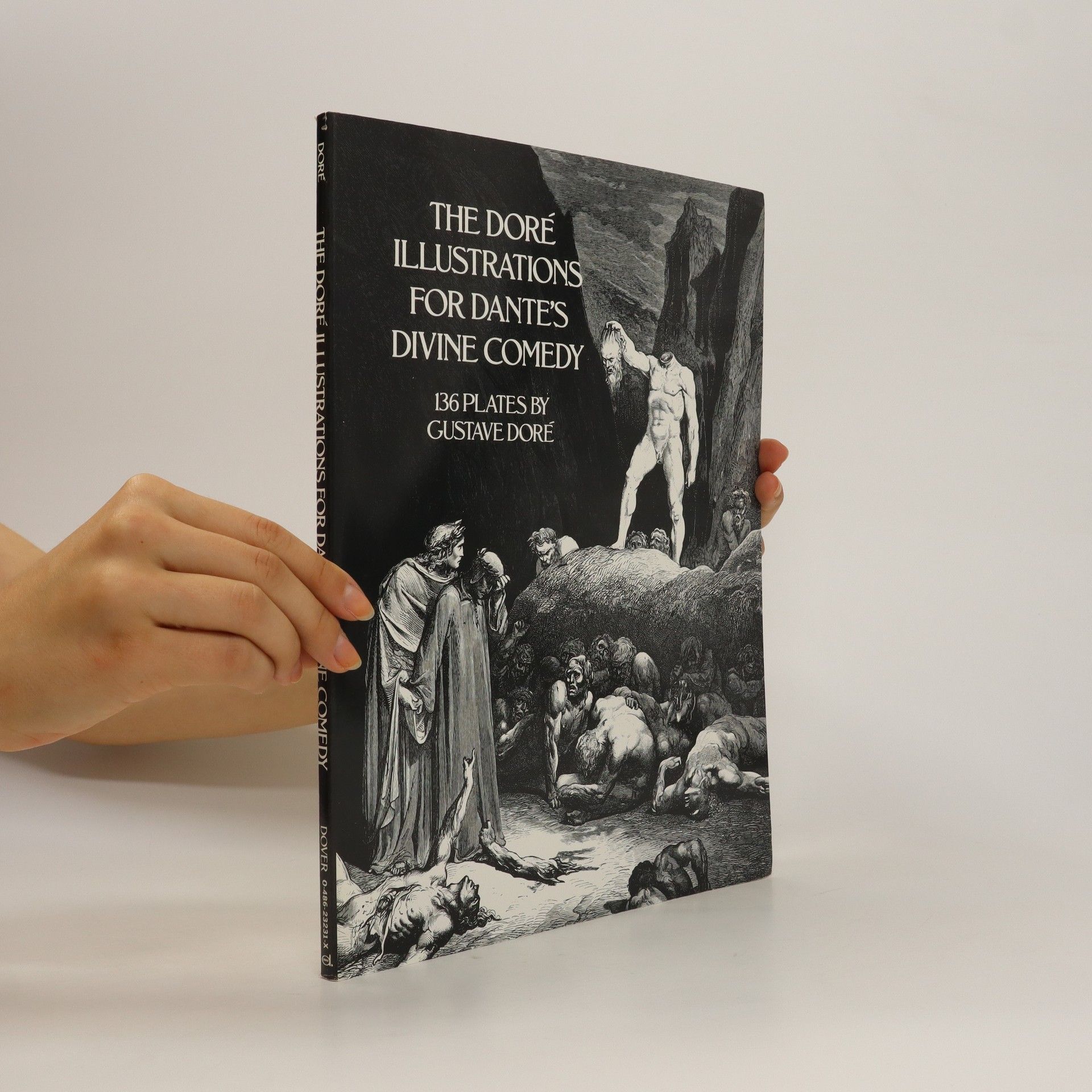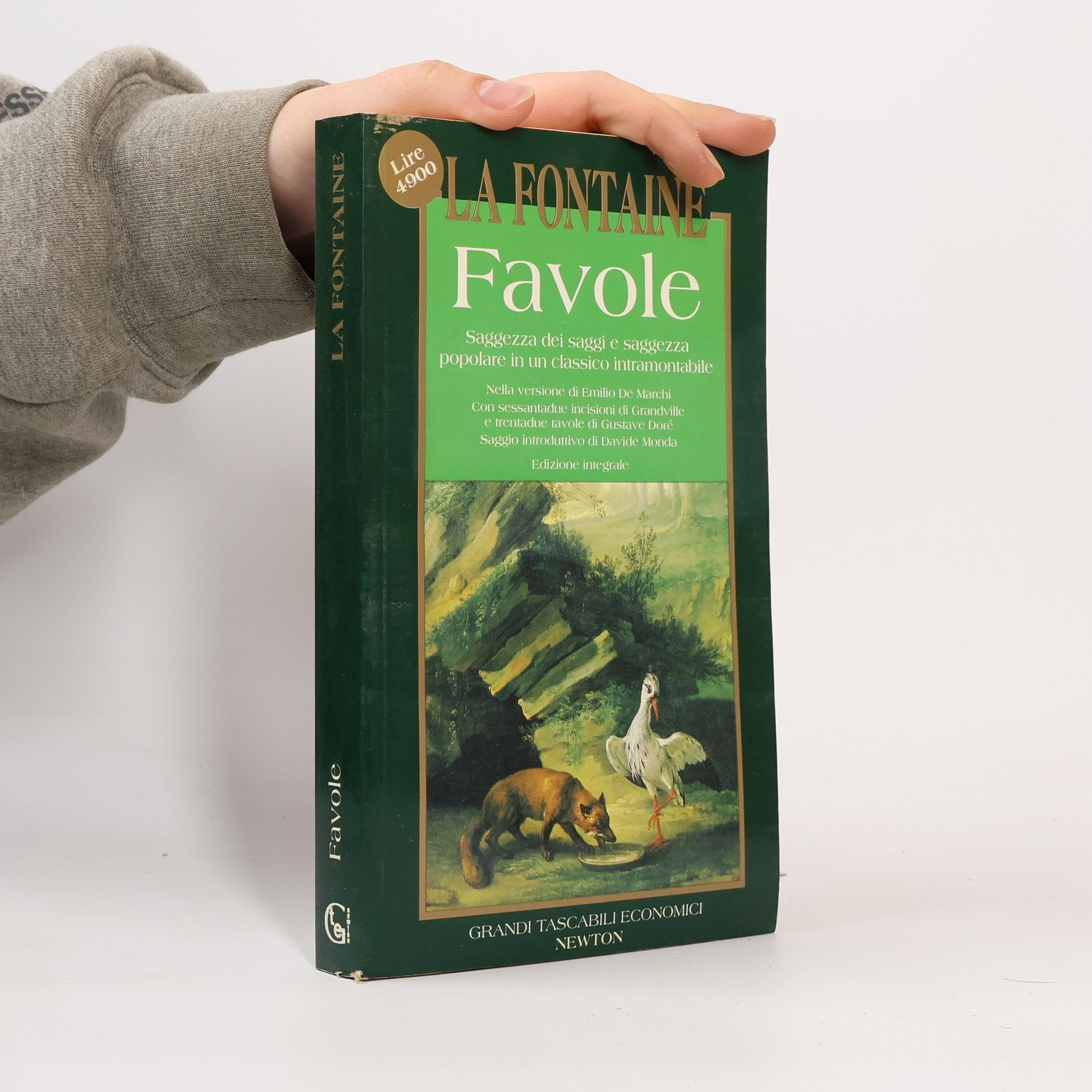Favole. Saggezza dei saggi e saggezza popolare in un classico intramontabile - Edizione integrale
- 368pagine
- 13 ore di lettura
Gustave Doré fu il più popolare e di successo illustratore di libri francese della metà del XIX secolo. Divenne ampiamente conosciuto per le sue illustrazioni di opere seminali, contribuendo a stabilire il libro illustrato di grande formato in tutta Europa. La sua arte è caratterizzata da un apprezzamento spiritoso, sebbene alquanto ingenuo, per il grottesco, commercializzando il fascino romantico per lo stravagante. Più tardi, i suoi studi più sobri dei quartieri più poveri di Londra catturarono l'attenzione di van Gogh, segnalando un passaggio verso un'osservazione più concreta.






This authoritative retrospective of Doré’s prints and paintings showcases over 10,000 works in a spectacularly ornate package that reflects the artist’s dramatic style. If you were a literature consumer in the nineteenth century, your library likely featured his illustrations. From the Bible to Shakespeare, Balzac to Poe, Doré’s intricate and exuberant drawings brought great works to life, making them as cherished as the stories they illustrated. This magnificent volume also reveals his talents as a sculptor, painter, and cartoonist. It spans Doré’s entire career, with chapters dedicated to specific works such as The Divine Comedy, Don Quixote, Tennyson’s Idylls of the King, and medieval fairy tales, each accompanied by exquisite full-page reproductions that highlight his genius in line, shading, and texture. The authors provide insights into the techniques Doré used to create his masterpieces. Fans will appreciate the book's stunning production, featuring quarter binding, gold foil stamping, embossing, a belly band, and silkscreen printing on three edges. Filled with incisive analysis and expert historical perspectives, this volume is a consummate collector’s item—expansive and sensational, just like the artist himself.
The Rime of the Ancient Mariner is the longest major poem by the English poet Samuel Taylor Coleridge. The Poem relates the experiences of a sailor who has returned from a long sea voyage. The mariner stops a man who is on the way to a wedding ceremony and begins to narrate a story. The wedding-guest's reaction turns from bemusement to impatience to fear to fascination as the mariner's story progresses, as can be seen in the language Coleridge uses narrative techniques such as personification and repetition to create a sense of danger, the supernatural, or serenity, depending on the mood in different parts of the poem. Along with other poems in Lyrical Ballads, it was a signal shift to modern poetry and the beginning of British Romantic literature. Samuel Taylor Coleridge (1772 - 1834) was an English poet, literary critic and philosopher who, with his friend William Wordsworth, was a founder of the Romantic Movement in England and a member of the Lake Poets.
'London: A Pilgrimage' was conceived in 1868 by the journalist and playwright Blanchard Jerrold. Accompanied by the famous artist Gustave Dore, Jerrold prowled every corner of the heaving metropolis, sometimes with plain-clothes police for protection. 'London: A Pilgrimage' is a forgotten classic of social journalism, a frank and brutal look at the poverty striken, gin-swilling London of the nineteenth century, written in a perceptive, bold and gripping style.180 incredible etchings by Dore escort Jerrold on his odyssey through the pulsating city, into the Lambeth gas works, seedy opium dens and grubby bathing houses; peering curiously into the desperate lives of the flower sellers, lavender girls and organ grinders. 'London: A Pilgrimage' is an enlightening work that brings to life the chaotic and gloomy past of a great city on the cusp of modern times.Peter Ackroyd's excellent introduction sheds further light on the period and the context in which Jerrold and Dore felt compelled to reveal to the world the squalor into which London was slowly sinking.
Reproductions of Dore's scenes from the Inferno, Purgatorio and Paradiso are accompanied by lines from Longfellow's translation
This 1895 book presents the text of the seventh and eighth books of Milton's Paradise Lost, which contain an account of the creation of the earth after the fall of Lucifer. The poem is accompanied by a biography of Milton, a history of the poem and a discussion of the cosmology of Paradise Lost.
Long narrative poem originally titled Commedia (about 1555 printed as La divina commedia) written about 1310-14 by Dante. The work is divided into three major sections--Inferno, Purgatorio, and Paradiso--which trace the journey of a man from darkness and error to the revelation of the divine light, culminating in the beatific vision of God. It is usually held to be one of the world's greatest works of literature. The plot of The Divine Comedy is simple: a man is miraculously enabled to visit the souls in Hell, Purgatory, and Paradise. He has two guides: Virgil, who leads him through the Inferno and Purgatorio, and Beatrice, who introduces him to Paradiso. Through these fictional encounters taking place from Good Friday evening in 1300 through Easter Sunday and slightly beyond, Dante the character learns of the exile that is awaiting him (an actual exile that had already occurred at the time of writing). This device allowed Dante not only to create a story out of his exile but also to explain how he came to cope with personal calamity and to offer suggestions for the resolution of Italy's troubles as well.